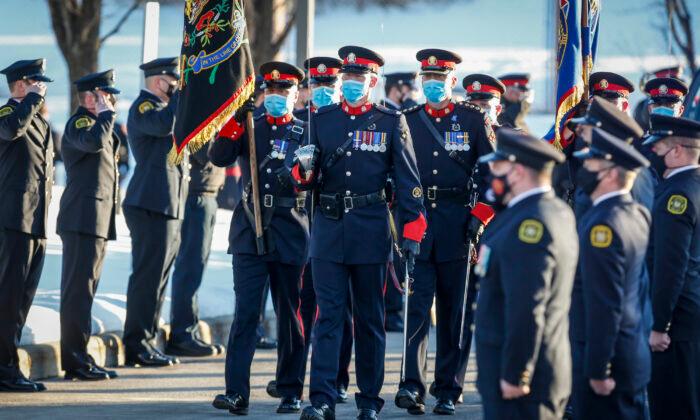The Calgary Police Association asked its members on Wednesday to comply with an order from the city’s police commission to remove the “Thin Blue Line” (TBL) patches from their uniforms after previously telling them to resist it a few weeks ago.
“While we know that removing the patch is a tough pill to swallow, we believe that you have achieved several ‘wins,’” Orr said, in reference to negotiations with the Calgary Police Service and the Calgary Police Commission.
Some of these wins include the right to wear the symbol—a Canadian flag on a black and grey background with a thin blue line through it—on dress uniforms.
“We would be the first major police service in the country to do so and, in turn, would lead the way for all police services across the country to follow suit,” wrote Orr.
Another “win” is the prospective adoption of rules to prevent police commission members from slandering CPA members or the policing profession.
After the Calgary Police Commission had ordered the patch be removed on March 30, the CPA doubled down by saying it would purchase enough patches for all its uniformed members and lapel pins for officers working in plain clothes.
“We were very disappointed with the decision to ban the wearing of the thin blue line patch. It’s a symbol of great importance to our members and it speaks to a number of important issues, including remembrance for our fallen, a show of support to one another and a very difficult job, which has long- and short-term health implications for our members,” Orr told CBC at the time.
According to the Thin Blue Line Canada’s website, the symbol originated in the United Kingdom but is now prevalent in the United States and Canada to commemorate fallen officers and show support for law enforcement in general.
Officers from the federal police force RCMP are not allowed to wear the symbol.





